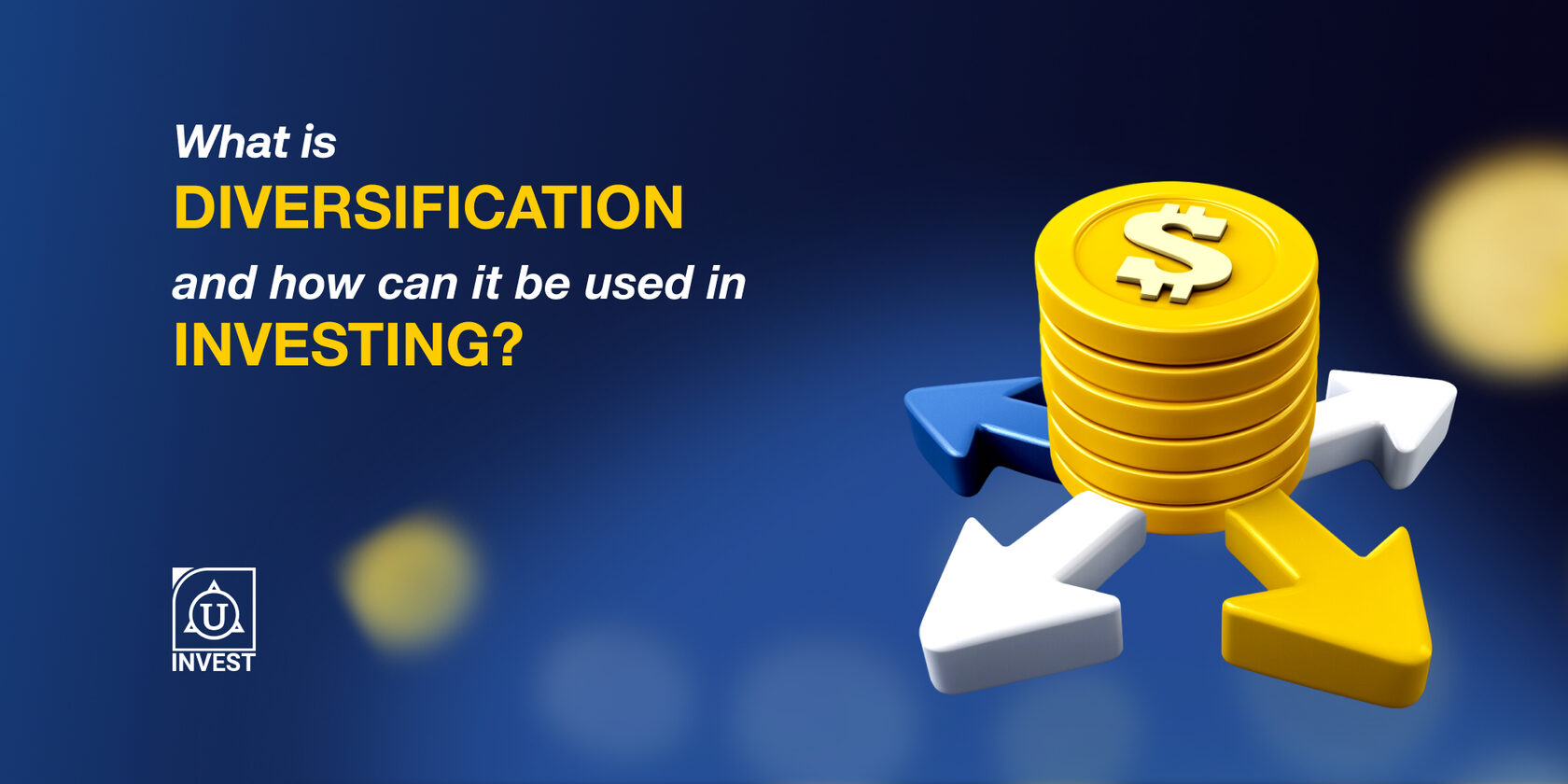Investing in the stock market, real estate, or any other asset class can be both exciting and scary. While the chance to earn a lot of money is tempting, the possibility of losing your money is also scary. This is where the idea of diversification comes in. Diversification is one of the most important ideas in smart investing. It helps you manage risk while also working toward financial growth.
BUT WHAT EXACTLY IS DIVERSIFICATION, AND HOW CAN IT BE USED IN INVESTING
Diversification is a way to manage risk. It involves investing in different things, like stocks, bonds, and cash. A diversified portfolio is a mix of different types of investments. This is done to limit how much you are exposed to any one asset or risk.
The idea is that by spreading your money around, you'll probably get better long-term returns and lower the risk of losing money on any one investment.
Imagine you have a portfolio that only invests in technology stocks. If the tech sector does badly, your whole portfolio could suffer. However, if you also have investments in other sectors, such as healthcare, energy, or bonds, those assets might perform well when technology stocks are struggling. This could balance out the overall risk.
In short, diversification aims to “smooth out” the ups and downs of individual investments, ultimately leading to more consistent returns over time.
The idea is that by spreading your money around, you'll probably get better long-term returns and lower the risk of losing money on any one investment.
Imagine you have a portfolio that only invests in technology stocks. If the tech sector does badly, your whole portfolio could suffer. However, if you also have investments in other sectors, such as healthcare, energy, or bonds, those assets might perform well when technology stocks are struggling. This could balance out the overall risk.
In short, diversification aims to “smooth out” the ups and downs of individual investments, ultimately leading to more consistent returns over time.
WHY IS DIVERSIFICATION IMPORTANT

1. It reduces risk
The main benefit of diversification is that it reduces risk. By investing in a variety of assets that react differently to the same economic events, you can minimize the chance of losing a lot of money. If one asset class performs poorly, another may be performing well, potentially making up for the losses.
2. Helps you get the most out of your investments
While diversification doesn't ensure positive returns, it can help investors achieve more consistent growth. By having a mix of investments, you increase the chances of gaining from different sectors or asset classes that perform well under varying market conditions.
3. It reduces the effect of market volatility
Markets are often unpredictable. Asset prices change based on factors like interest rates, inflation, and world events. A diversified portfolio can help reduce the impact of these changes. For example, stocks might go down in value, but bonds or other less-variable assets might go up, helping balance out any potential losses.
4. Achieve your long-term financial goals
Diversification helps reduce risk and position your portfolio for steady growth over time. With less risk and a focus on long-term stability, you're more likely to stay on track to meet your financial goals, whether it's retirement, buying a home, or funding a child's education.
HOW CAN YOU USE DIVERSIFICATION WHEN YOU'RE INVESTING

There are several ways to diversify your investments. Here are some of the most effective methods:
1․ Diversifying by Asset Class
The most basic form of diversification is holding different types of assets in your portfolio. This could include:
Stocks: Equities represent ownership in companies. They can offer high returns but are also subject to market volatility.
Bonds: Debt securities issued by governments or corporations are generally more stable than stocks and offer predictable income.
Real estate: Investing in property or real estate investment trusts (REITs) lets you participate in the real estate market, which often behaves differently from stocks.
Commodities: Precious metals (like gold and silver) and agricultural products can protect your investments when inflation rises or the market drops.
Cash and cash equivalents: Holding a portion of your portfolio in money market funds or cash can provide liquidity and stability.
Stocks: Equities represent ownership in companies. They can offer high returns but are also subject to market volatility.
Bonds: Debt securities issued by governments or corporations are generally more stable than stocks and offer predictable income.
Real estate: Investing in property or real estate investment trusts (REITs) lets you participate in the real estate market, which often behaves differently from stocks.
Commodities: Precious metals (like gold and silver) and agricultural products can protect your investments when inflation rises or the market drops.
Cash and cash equivalents: Holding a portion of your portfolio in money market funds or cash can provide liquidity and stability.
2. Industry or Sector Diversification
Instead of investing all your money in one sector, such as technology or healthcare, you can diversify by investing across multiple sectors. For example:
Technology
Consumer goods
Energy
Financials
Healthcare
Each industry reacts differently to economic changes. By investing in different industries, you can protect your portfolio from the ups and downs of a single industry.
3. Geographic Diversification
Investing in different areas can help you avoid big losses. You can also reduce risk by investing in other countries. International investments in stocks, bonds, or real estate can give you exposure to different economies and markets. This strategy can help you benefit from growth in other regions while protecting your portfolio from changes in the domestic market.
4. time-based diversification (dollar-cost averaging)
This strategy involves investing an equal amount of money at regular intervals, no matter what the market is doing. By investing regularly, you reduce the risk of buying all your investments at a high price. This approach can help stabilize the ups and downs of the market because you buy more shares when prices are low and fewer shares when prices are high.
5. Diversified funds
If you prefer not to worry about investing, mutual funds, exchange-traded funds (ETFs), and target-date funds can help you invest in a variety of assets. These funds typically hold many different types of assets, such as stocks, bonds, and international investments. This makes it easy for investors to spread their risk across different asset classes and sectors.
HOW MUCH DIVERSIFICATION IS TOO MUCH?

While diversification is essential, it's important to have the right balance. If you diversify too much, your returns might get diluted, which makes it harder to take advantage of growth opportunities. Ideally, a well-diversified portfolio should include a mix of assets that match your investment goals, risk tolerance, and time horizon.
Many new investors make the mistake of spreading their investments too thinly across too many different assets. This leads to a portfolio that lacks focus. Instead of diversifying just for the sake of it, focus on building a portfolio that reflects your financial goals and objectives.
Many new investors make the mistake of spreading their investments too thinly across too many different assets. This leads to a portfolio that lacks focus. Instead of diversifying just for the sake of it, focus on building a portfolio that reflects your financial goals and objectives.
CONCLUSION
Diversification is a key investment strategy that can help reduce risk, stabilize market fluctuations, and potentially improve returns over time. By investing in different types of assets, industries, and regions, you can make your investments more stable and grow your money more safely. Diversification doesn't guarantee success or eliminate risk, but it's a proven way to protect your portfolio from big losses and increase the chances of achieving your financial goals.
The key is to find the right balance for your personal situation. Diversification is a useful tool for building a strong investment strategy, whether you're an experienced investor or just starting out.
The key is to find the right balance for your personal situation. Diversification is a useful tool for building a strong investment strategy, whether you're an experienced investor or just starting out.
HOW TO INVEST?
Open a free brokerage account with Unibank Invest and start investing. The Unibank Invest app provides access to the world’s largest stock exchanges, enabling you to purchase international investment instruments, such as stocks, bonds, and ETFs.
To open a brokerage account, fill out the online application or call +374 43 004 382.
